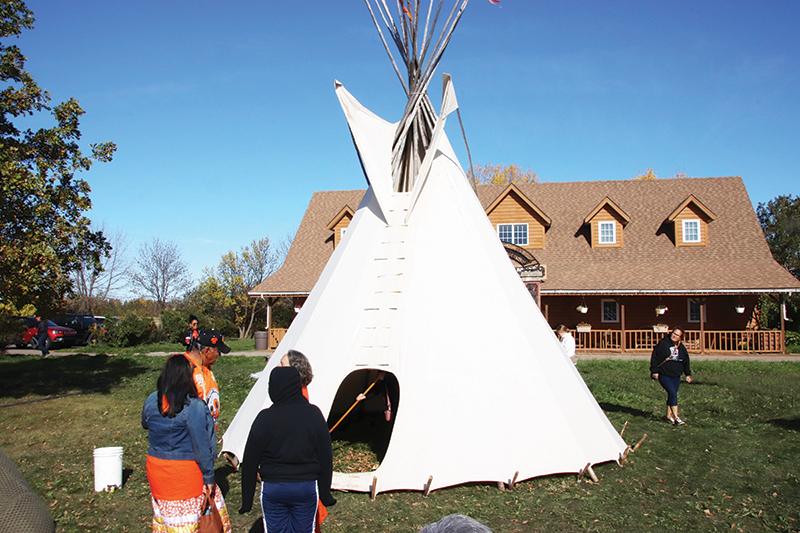The Lakeland Society for Truth and Reconciliation held activities in Bonnyville last weekend to mark the National Day of Truth and Reconciliation.
The first event Saturday morning was a teepee raising, led by Melvin John of Kehewin Cree Nation. John gathered the volunteer crew together before the work started and explained the process while teaching about the teepee’s history and cultural significance.
“The earliest teepees were between children that were playing with the leaves and sticks,” he said. “The elders of the community saw this and they reconstructed it using hides.”
John explained that the Cree were buffalo people. “We followed the buffalo, it was our sustenance.
They gave us food, gave us clothing, gave us everything that we ever needed.
“And it gave us our weaponry. It gave us our ability to be to have utensils. These were items that we needed in the day-to-day living circumstance. Our elders tell us that in the past, famine was just ‘tomorrow.’ Starvation was ‘tomorrow.’
“It was always a constant revolution, a seasonal pattern,” John said.
He said raising the teepees was part of the women’s role, because the mothers and grandmothers had the responsibility of nurturing and educating the children. “Our mothers were nurturers. They nurtured our ability to learn and to understand, and they gave us a concept of how to see the world around us.
“And this came from the teepee,” John continued. “They were responsible for the women’s duties of how to raise children and speak about how to look at yourself, how to look at your community members, how to look at your community beyond that.”
He said that by the time a child was able lift a teepee pole and help with the work, they had a role in the community.
“The women elders of the community would instill that each pole would resemble a different value within our value system. Each pole would have a meaning.
“Once you were able to pick up a stick that child was no longer a child. You were forged. Now you had a responsibility. ‘University’ ended at seven years old. There was no more formal instruction after seven—you were a doctor already.”
“After we were incarcerated on the reservation we had nothing to do,” John said. “Everything collapsed. That knowledge was taken away from us. And now we’re reclaiming that part of us that made this have meaning.”
John showed how raising the teepee followed a series of time-honoured, proven steps. The grandmothers, he said, could build a teepee in a matter of seconds so the children could be sheltered and protected.
With John teaching everyone the different steps—from laying out the first poles and hoisting them up, arranging and securing the remaining poles, and wrapping the canvas before finally pegging the teepee down—Saturday’s session took a couple of hours.
It was enjoyable and satisfying work. John said it was important to understand not just the techniques but the life lessons.
“Our kokums felt sorry for us, and gave us this responsibility,” he said. “Always tell the people of the grandmothers’ love for us. It’s deep inside of us, it’s a knowledge and a training.”










